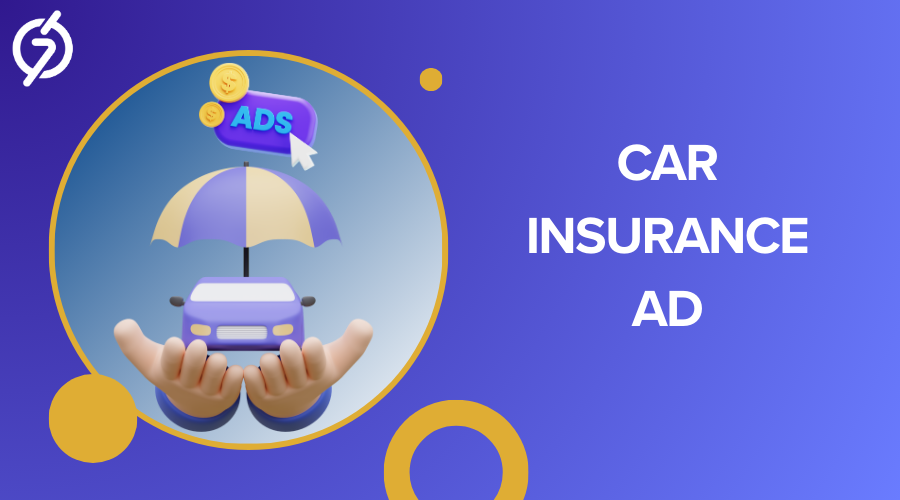Top Trends in Car Insurance Advertising for 2025

Car insurance is one of those industries that never slows down. People will always need protection for their vehicles, but the way companies reach out to potential policyholders keeps evolving. A Car Insurance Ad in 2025 looks very different compared to the ads we saw even three years ago. Digital habits have shifted, customer expectations have grown sharper, and the advertising platforms themselves are rewriting the rules.
For marketers and insurance providers, this means one thing: if you want to stay competitive, your advertising efforts must align with current trends rather than sticking to old practices.
Why Staying Updated Matters
Insurance advertising has always been competitive, but the pace of change has accelerated. Customers are now less patient with generic messages, and they expect brands to show both trust and value instantly. A static banner with “Get Car Insurance Now” doesn’t do much anymore. Instead, smart ads that engage, educate, and connect emotionally are leading the way.
This shift is not just a creative change — it’s a survival strategy. Companies that miss these trends risk losing visibility to insurers who adapt faster.
Key Trends Defining Car Insurance Advertising in 2025
1. Personalization at Scale
The idea of “one-size-fits-all” is fading away. Insurance companies are increasingly using AI-driven tools to customize their car insurance ads based on user behavior. Imagine a customer searching for “affordable insurance for electric cars” and seeing a targeted ad that not only highlights cost savings but also addresses eco-friendly driving.
Such precision builds trust. Customers feel understood, and insurers see higher engagement rates.
2. Storytelling through Auto Insurance Ads
Insurance may be technical, but ads that tell stories resonate more deeply. In 2025, auto insurance ads are focusing on real-life scenarios: a family road trip, a student’s first car, or someone recovering smoothly after an accident because they had the right coverage.
This approach doesn’t just highlight the product — it highlights peace of mind. When done well, storytelling makes even a financial decision feel personal.
3. Video and Interactive Content
Short-form video has become a major player. From Instagram reels to YouTube shorts, insurers are presenting policy details in simple, visual formats. Beyond video, interactive ads — such as quick quizzes that tell users “What type of vehicle insurance fits you best?” — are creating higher engagement.
Not only do these formats make ads less intrusive, but they also educate while entertaining.
4. Emphasis on Trust and Transparency
With rising scams and hidden charges in the financial space, transparency has become a powerful marketing tool. Successful vehicle insurance ads in 2025 focus on honesty — showing clear premium breakdowns, straightforward claim processes, and customer testimonials.
Many companies are even running comparison ads, openly showing how their plans differ from competitors. This confidence builds brand credibility faster than any flashy design.
5. Leveraging Data-Driven Campaigns
Data is no longer optional. Every major insurer is investing in analytics to refine ad targeting. From understanding seasonal spikes (such as higher demand during new car launches) to predicting policy renewals, data is shaping how and when a motor insurance ad is displayed.
The winners are the ones who balance data-driven precision with human empathy — ads that feel personal but not intrusive.
6. Cross-Platform Consistency
A customer may see an ad on TikTok, research on Google, and then visit a company website before making a decision. This journey demands consistent branding across every touchpoint. Insurers who maintain the same tone, message, and trust-building approach across platforms are seeing stronger conversions.
This also includes retargeting — reminding users about a policy they explored earlier without overwhelming them.
7. Rise of Community-Based Marketing
Instead of purely selling, insurers are creating communities where drivers share tips, safety hacks, and experiences. Ads that promote joining these communities indirectly bring in more qualified leads. This soft-selling technique works especially well with younger audiences who prefer brands that add value beyond a transaction.
Why Many Ads Still Fail
Even with these advancements, many insurance providers fall into the trap of over-promising, under-explaining, or being too pushy. A flashy banner without meaningful information often leaves customers skeptical.
The challenge is to strike a balance between creativity and clarity. Ads should feel like a helping hand, not a sales pitch.
A Soft Solution That Works
One effective way for insurers and advertisers to test what resonates is to run smaller, data-backed campaigns before scaling up. For instance, you can create a test campaign on a trusted ad network to experiment with different creatives and messaging styles. This allows you to learn quickly without spending big upfront.
Learning from Innovative Campaigns
Some of the most effective campaigns today are not only creative but also educational. If you’re looking for deeper insights on this, guides like Insurance Advertising with Innovative Campaigns showcase how insurers are adopting new strategies to stay ahead.
Learning from these approaches can inspire your own campaigns while avoiding the mistakes of outdated advertising.
The Future of Car Insurance Ads
By the end of 2025, experts predict that car insurance ads will become even more integrated with AI, personalization, and real-time data. We’re also likely to see more collaboration between insurers and automotive tech companies, where ads will pop up directly in smart vehicles or mobile dashboards.
The brands that thrive will be those who not only adopt new tools but also keep their ads human-focused. After all, car insurance isn’t just about policies and premiums — it’s about protecting moments, memories, and mobility.
Final Thoughts
The world of insurance advertising is moving fast, but the direction is clear. Customers expect ads that are honest, personalized, and meaningful. For insurers and advertisers, this is both a challenge and an opportunity.
By keeping up with trends like personalization, storytelling, transparency, and interactive formats, you can ensure that your car insurance ads in 2025 don’t just capture attention — they build lasting trust.






